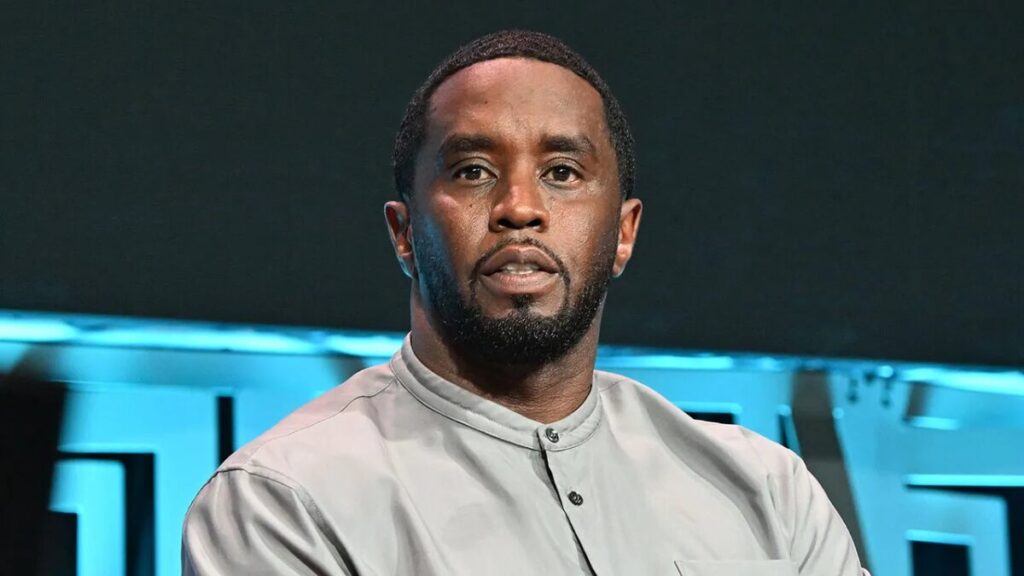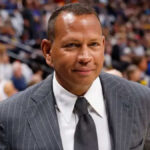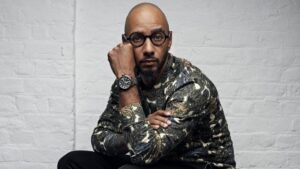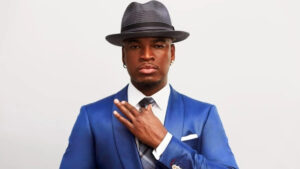In 2025, Sean “Diddy” Combs isn’t just wealthy — he’s emblematic of a new kind of mogul. With a net worth estimated at over $400 million, his fortune isn’t merely a product of platinum records or celebrity status. It’s the result of a decades-long strategy that transformed street hustle into boardroom power, turning music royalties into equity stakes, and cultural capital into global brand leverage.
But this isn’t just a rags-to-riches tale. Combs’ journey is layered, marked by calculated reinvention, public controversies, bold business pivots, and an unrelenting grip on his narrative. From the gritty sound of Bad Boy Records to the luxury allure of Cîroc and DeLeón, every chapter of his wealth story reflects a man who has mastered both the market and the moment.
This article isn’t just about what Sean Combs is worth. It’s about why his fortune matters — and what it reveals about power, legacy, and vision in modern America.
2025 Snapshot — What Is Sean Combs’ Net Worth Today?
As of mid-2025, Sean Combs’ net worth is estimated to be $400 million, according to USA Today. while outlets like Celebrity Net Worth and Bloomberg maintain that he remains a certified billionaire, bolstered by long-term equity holdings.
His wealth is diversified across multiple sectors. Roughly $300 million is tied to his lucrative partnership with Diageo’s Cîroc vodka, despite their highly public split in 2023. Though the deal ended in court, Combs retained significant earnings from over a decade of revenue sharing. His ownership stake in Revolt, the Black-owned media network he co-founded, is estimated to contribute another $60–100 million, even as questions loom about its long-term profitability.
Music royalties and publishing rights—largely from the Bad Boy catalog—remain a steady income stream, though less dominant than in earlier years. Meanwhile, real estate holdings, including luxury properties in Miami, Los Angeles, and the Hamptons, account for upwards of $100 million in value. His investments in fashion (including the reacquired Sean John brand) and education ventures further round out his portfolio.
Unlike tech billionaires or Wall Street moguls, Combs built his empire through cultural leverage, crafting brands that speak to aspiration and identity. His wealth isn’t tied to code or capital markets, but to his ability to shape taste, influence trends, and monetize the intersection of hip-hop and high-end consumerism.
From the Bronx to Billionaire — The Origin Story of a Hip-Hop Hustler
Before he was a business icon, Sean Combs was a kid from Harlem, raised in Mount Vernon, New York, by a single mother after his father was murdered when he was just two. That early exposure to loss—and the fragility of legacy—would later fuel his obsession with ownership and impact. At Howard University, Combs didn’t just study business; he lived it. Known for throwing campus parties that drew crowds and cash, he was already curating culture and monetizing attention before graduation.
But he didn’t wait for a diploma. Instead, he landed an internship at Uptown Records, where he quickly moved from coffee runs to artist development. It was there he helped shape the careers of Jodeci and Mary J. Blige, blending street sensibility with commercial polish. When he was fired in 1993, he didn’t stumble—he scaled. That same year, he founded Bad Boy Records, launching The Notorious B.I.G. and redefining the sound of East Coast hip-hop.
From day one, Combs didn’t just want to be in the room—he wanted to own the building. His early moves weren’t accidental; they were indicators of an emerging mogul who understood that influence, when paired with infrastructure, could build empires.
Music Was Just the Beginning — Building Bad Boy into a Business Empire
Bad Boy Records was never just a label—it was Sean Combs’ first major play in brand equity. Founded in 1993 after his abrupt exit from Uptown Records, Bad Boy wasn’t built around a sound alone, but a fully engineered cultural ecosystem. With The Notorious B.I.G. as its centerpiece, Combs didn’t just produce hits—he crafted personas, narratives, and lifestyles that extended beyond the studio.
What set Combs apart was his early understanding of intellectual property and ownership. While many artists were signing away masters, Combs structured deals that kept him in control of publishing rights and production credits. He also owned the machinery around the music: marketing, video production, touring, and merch. Every artist signed to Bad Boy became part of a larger, monetizable brand strategy—with Combs at the center, not just creatively, but financially.
Behind the scenes, he negotiated licensing deals, TV appearances, and cross-promotions that blurred the line between music and media. Even amid criticism over contracts—some Bad Boy alumni later accused him of exploitative terms—Combs maintained control of his IP and business structure. Bad Boy wasn’t just a launchpad for talent; it was a prototype for hip-hop as enterprise, proving that ownership, not output, was the real currency.
Cîroc, Revolt, and Retail — The Business Ventures That Made Him Richer Than Rap
Sean Combs didn’t just pivot from music to business—he engineered a playbook for turning influence into equity. His 2007 partnership with Diageo for Cîroc vodka marked a turning point. Rather than take a standard endorsement check, Combs negotiated a 50/50 profit-sharing deal, effectively tying his income to the brand’s performance. Cîroc was floundering before he came on board; after he rebranded it as the champagne of nightlife—with sleek marketing, celebrity placement, and urban luxury appeal—sales skyrocketed from 40,000 cases a year to over two million. Combs wasn’t just the face—he was a stakeholder.
That model of high-impact brand building continued with Revolt, the Black-owned media platform he launched in 2013. It was a bold move into content ownership, aimed at Gen Z and millennial audiences hungry for culturally authentic voices. While Revolt hasn’t reached mainstream profitability on the scale of cable giants, it represents Combs’ belief in narrative control as economic power.
He also ventured deep into fashion with Sean John, which became a streetwear powerhouse in the early 2000s. After selling a majority stake, Combs reacquired the brand in 2021—an unexpected full-circle move that reflected both nostalgia and a bet on the resale/luxury crossover trend.
And then there’s DeLeón tequila, co-purchased with Diageo, where he again prioritized ownership over endorsement. His portfolio paints a clear picture: Combs doesn’t chase trends—he creates platforms, then anchors them in lifestyle and identity.
Some plays, like Revolt, were slower burns. Others, like Cîroc, exploded. But across ventures, his strategy is consistent: leverage celebrity, embed cultural cachet, and secure backend ownership. It’s less about launching products and more about owning the perception that sells them.

The Art of the Deal — How Sean Combs Navigates Contracts, Controversy, and Cashflow
Sean Combs has long preferred equity over appearance fees, a strategy that’s made him one of the wealthiest figures in entertainment. Whether negotiating profit splits for Cîroc or structuring ownership in Revolt, his moves reflect a clear principle: control the backend, not just the spotlight. He’s consistently leaned into licensing, distribution rights, and brand equity—often securing long-term upside in exchange for short-term payout restraint.
But the mogul mindset isn’t without turbulence. In 2023 and 2024, Combs faced a wave of lawsuits and public accusations, including sexual assault allegations and legal battles tied to past business partnerships. Diageo publicly severed ties, ending their once-lucrative Cîroc and DeLeón relationship. The financial implications are real—valuation adjustments, paused deals, and reputational volatility have cast a shadow over once-stable streams.
Yet Combs has navigated backlash with a familiar playbook: silence followed by strategy. Rather than overexposing his defense in public, he’s reportedly redirected focus toward private investments and philanthropy—moves that signal both damage control and image recalibration.
Moving forward, these controversies may reshape how brands and investors evaluate risk around personality-led ventures. But if history is any indicator, Diddy’s resilience isn’t just PR polish—it’s part of a broader pattern of reinvention under pressure, where the business doesn’t stop—it adapts.
How Sean Combs’ Net Worth Compares to Jay-Z, Dr. Dre & Other Music Tycoons in 2025
In the upper echelons of hip-hop wealth, Sean Combs, Jay-Z, and Dr. Dre form a billionaire trifecta—but how they built their fortunes tells three distinct stories.
| Name | Estimated Net Worth (2025) | Core Wealth Drivers | Strategic Identity |
| Jay-Z | $2.5 billion | Art collection, venture capital, liquor (Armand de Brignac, D’Ussé), music IP | Investor-Artist |
| Sean Combs | $400 million | Liquor (Cîroc/DeLeón), fashion, media (Revolt), real estate | Brand Builder-Mogul |
| Dr. Dre | $500 million | Beats by Dre (Apple acquisition), Aftermath records, tech royalties | Product-Focused Strategist |
Jay-Z’s portfolio is diversified and artfully quiet—he places long-term bets through investments in startups and fine art, playing the slow, compounding game. Dr. Dre took a major one-time windfall with Apple’s $3B Beats deal in 2014, cashing out of tech early and securing generational wealth.
Combs stands out for building cultural infrastructure: television, fashion, spirits—each venture aimed at shaping how people see themselves, not just what they consume. His playbook centers on influence as equity, where the product is just the entry point to a broader lifestyle economy.
This isn’t a rivalry—it’s a business case study. Their fortunes don’t just measure success; they map how culture, capital, and identity intersect in three very different ways.
The Real Estate & Investment Portfolio You Don’t Hear Enough About
While Sean Combs is best known for flashy brand deals and high-profile ventures, a quieter, more telling dimension of his fortune lies in real estate and private investments—the kind of wealth that doesn’t make headlines but cements legacy.
His $40 million Holmby Hills estate in Los Angeles is a modern fortress of glass and stone, complete with a wine cellar, 17,000-square-foot mansion, and underwater tunnel to a grotto-style pool. He also owns prime properties in Miami’s Star Island, East Hampton, and Alpine, New Jersey—a real estate portfolio collectively valued at over $100 million. These aren’t just homes—they’re status markers and long-hold assets that appreciate quietly while projecting permanence.
Beyond property, Combs has reportedly invested in early-stage startups, especially those at the intersection of Black entrepreneurship, tech, and lifestyle. While details are often private, he’s been linked to media tech platforms, educational ventures, and even health-focused consumer brands. These investments reflect a maturing approach to wealth—one less reliant on brand visibility and more on asset insulation.
This shift from flash to infrastructure reveals Combs’ deeper play: not just staying rich, but staying relevant and protected in a volatile public landscape. It’s the evolution from mogul to institution.
Legacy in Motion — Philanthropy, Education, and Empowering the Next Generation
As Sean Combs’ empire matures, so does his sense of legacy. Beyond billion-dollar deals, he’s investing in something far less tangible but arguably more impactful: access and opportunity. His support for Capital Preparatory Charter Schools—with campuses in Harlem and the Bronx—signals a long-term commitment to education as a lever for change. He’s pledged millions to the schools, focusing on underserved communities and college readiness.
Combs has also donated $1 million to Howard University, his alma mater, and championed initiatives aimed at Black entrepreneurship and ownership. These efforts mirror the themes in his business playbook—empowerment, equity, and self-determination—but in service of a broader public good.
Is it heartfelt? Calculated? Probably both. But what’s clear is a shift: from being the face of a brand to building platforms for others to lead. In this light, Combs isn’t just protecting his legacy—he’s engineering its impact.
Sean Combs Isn’t Just Wealthy, He’s a Blueprint
Sean Combs’ billion-dollar fortune isn’t just a number—it’s a narrative. One built not only on beats and bottles, but on branding, controversy, reinvention, and an unrelenting grip on his identity. He didn’t inherit wealth, he architected it—by turning cultural influence into ownership, and celebrity into staying power. His story shows that in the modern economy, control over your image, your output, and your infrastructure is the real currency.
But perhaps what’s most instructive isn’t how Combs made his money—it’s how he continues to adapt. As new generations of creators seek autonomy in a fractured media landscape, his model offers a guide: build equity early, expand strategically, and never let visibility outpace value.
What’s next? Possibly more education ventures. Maybe a return to the media. But one thing’s clear—Diddy’s not just a mogul. He’s a case study in cultural capitalism that’s still being written.
Nishant is a digital strategist and celebrity finance expert with over 15 years of experience in SEO-driven content. As Founder of TheNetWorths.com, he crafts high-authority profiles on wealth, fame, and influence—trusted by readers seeking real insights behind public fortunes.




















4 thoughts on “Sean Combs Net Worth 2025: How He Built a $400 Million Empire From Hip-Hop to Luxury Vodka”